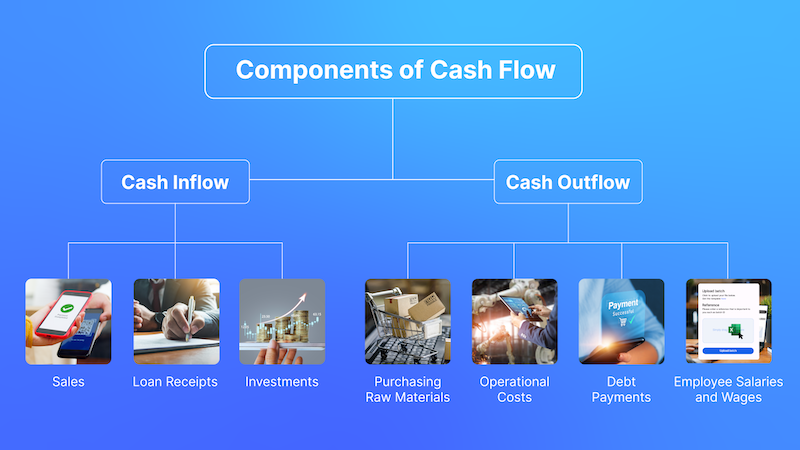In business, managing cash flow—which refers to the movement of money in and out of your business over a specified period—is a critical aspect of sustaining and growing a successful enterprise. It encompasses not only the revenue generated but also the expenses incurred, investments made, and loans acquired.
Importance of Cash Flow in Business
Cash flow is often considered the lifeblood of any business, regardless of its size or industry. It is what keeps the operations running smoothly and ensures that you can meet your financial obligations, such as paying suppliers, employees, and creditors. In the Indonesian business context, where economic conditions can fluctuate quite significantly, understanding and effectively managing cash flow is paramount.
In this 3-part series exploring cash flow, we hope to equip you with the knowledge and tools necessary to manage their cash flow effectively. By the end of this series, you should be able to:
- Gain a deeper understanding of the basics of cash flow and the different types of cash flow
- Calculate cash flow for your business and be able to make projections
- Manage your business cash flow effectively with the help of practical tips and pitfalls to avoid
What Is Cash Flow?
Cash flow, in its simplest form, is the movement of money in and out of your business. It is categorized into two main components: cash inflows and cash outflows.
Cash inflows represent the money coming into your business, such as sales revenue, loan receipts, or returns on investments.
On the other hand, cash outflows include the expenditures required to run your business, including raw material purchases, operational costs, debt payments, and employee salaries.
Difference Between Cash Flow and Net Income
It’s crucial to distinguish between cash flow and net income (also known as profit or net profit).
Net income is the difference between your revenue and expenses recorded on your income statement, while cash flow accounts for the actual movement of money in and out of your bank accounts.
These two figures can vary significantly, as net income includes non-cash items like depreciation, while cash flow focuses on cash transactions.
Why Is Cash Flow Important?
Cash flow acts as a financial barometer for your business. It allows you to assess your ability to cover short-term obligations, invest in growth opportunities, and weather unexpected financial challenges.
In Indonesia, where economic conditions can be volatile, a robust understanding of cash flow can mean the difference between survival and success.
Understanding the fundamental concepts of cash flow is the first step toward effective cash flow management. In the following section, we will delve deeper into the different components of cash flow.
Components of Cash Flow
A. Cash Inflows
Sales: The primary source of cash inflow for most businesses is sales revenue. This includes income generated from selling products or services to customers. Accurately tracking and forecasting sales is crucial for cash flow planning.
Loan Receipts: If your business secures loans or lines of credit, the funds received from these sources contribute to your cash inflow. It’s essential to manage loans wisely to avoid overextending your cash flow.
Investments: Income generated from investments, such as interest or dividends, can also bolster your cash flow. Careful consideration of investment opportunities is necessary to ensure they align with your business’s financial goals.
B. Cash Outflows
Purchasing Raw Materials: For manufacturing or product-based businesses, purchasing raw materials is a significant cash outflow. Efficient inventory management can help optimize this expense.
Operational Costs: Operational costs encompass various expenses, including rent, utilities, marketing, and office supplies. Monitoring and controlling these costs can positively impact your cash flow.
Debt Payments: If your business has borrowed money, regular debt payments are a necessary cash outflow. Proper debt management and refinancing options can help reduce the burden on your cash flow.
Employee Salaries and Wages: Paying your employees is not only an ethical obligation but also a critical cash outflow. Managing payroll efficiently is essential to ensure your team receives their due while maintaining a healthy cash flow.
Understanding these components is fundamental to managing your business’s cash flow effectively. In the upcoming section, we will explore the differences between operating, investing, and financing cash flows.
Understanding the Differences Between Operating, Investing, and Financing Cash Flows
A. Operating Cash Flow
Operating cash flow (OCF) represents the cash generated or consumed by your day-to-day business operations. It includes revenue from sales, payments from customers, and expenses related to running your business, such as purchasing inventory, paying suppliers, and covering employee salaries.
Monitoring OCF is vital as it indicates your business’s ability to sustain its core operations without relying on external sources of cash. A positive OCF suggests that your business can cover its operating expenses and has the potential for growth.
B. Investing Cash Flow
Investing cash flow pertains to the cash flows associated with your business’s investments in assets or other ventures. This includes purchasing or selling assets like equipment or real estate, as well as investments in other businesses or ventures.
Positive investing cash flow can indicate that your business is actively investing in its future growth. However, substantial negative investing cash flow might signal a significant investment in assets or acquisitions, which can impact your overall cash position.
C. Financing Cash Flow
Financing cash flow accounts for the cash flows resulting from debt or equity financing. These include obtaining loans, issuing stock, repurchasing shares, or paying dividends to shareholders.
Positive financing cash flow may indicate that your business is securing external funding to support its operations or expansion. Negative financing cash flow could signify loan repayments or shareholder payouts.
Understanding the distinctions between these cash flow categories is crucial for effective financial management. It allows you to assess where your cash is coming from and where it’s going. By analyzing these components, you can make informed decisions about your business’s financial strategies and prioritize areas that need attention.
In the next blog on How to Calculate Cash Flow & Cash Flow Projections for Businesses, we will discuss how to calculate cash flow for your business so you can make informed decisions.











